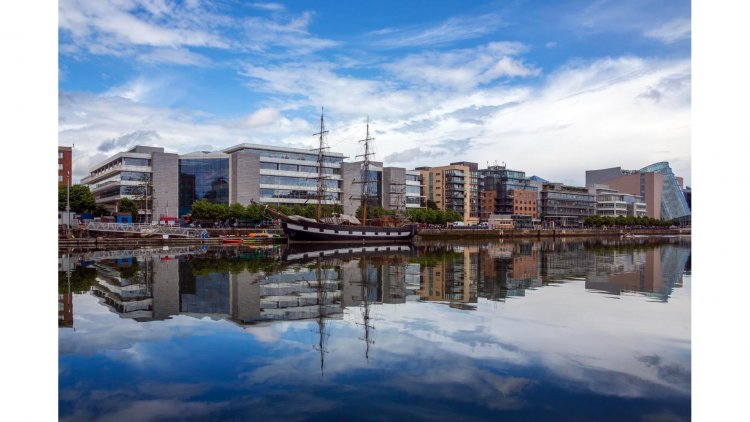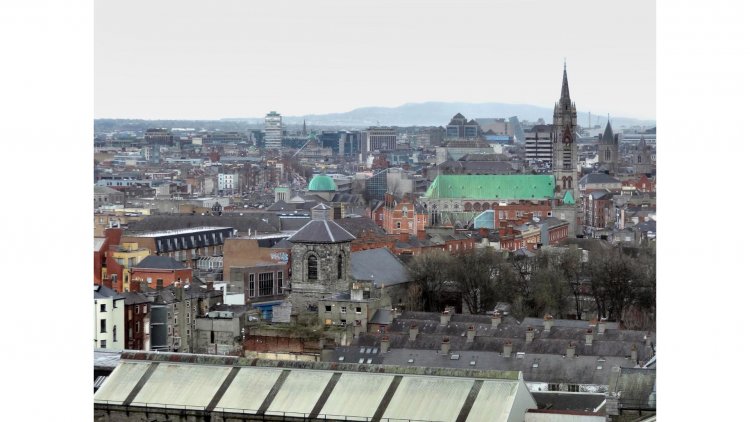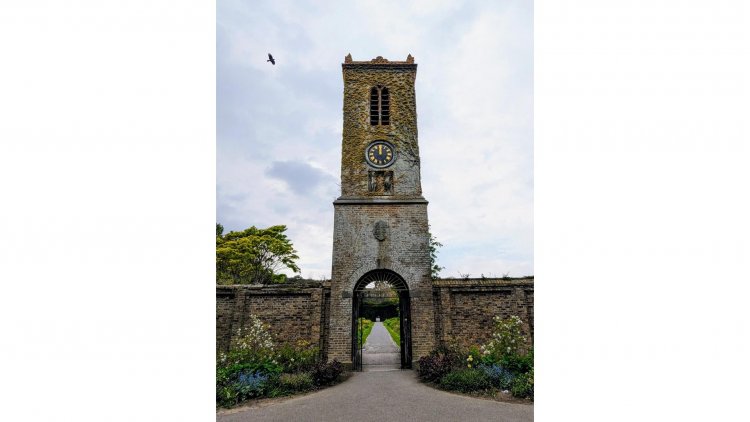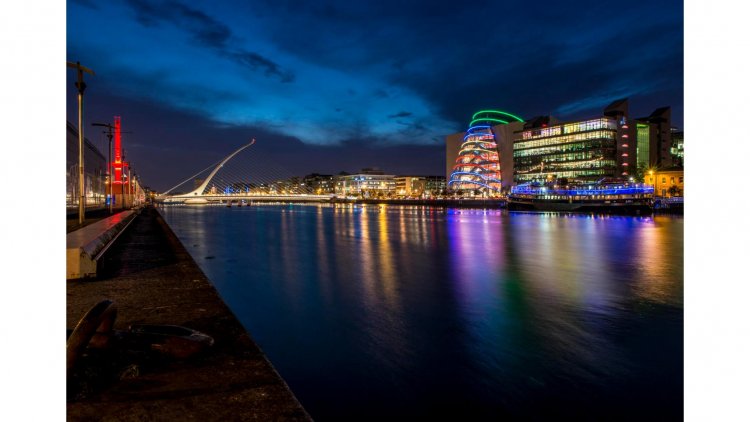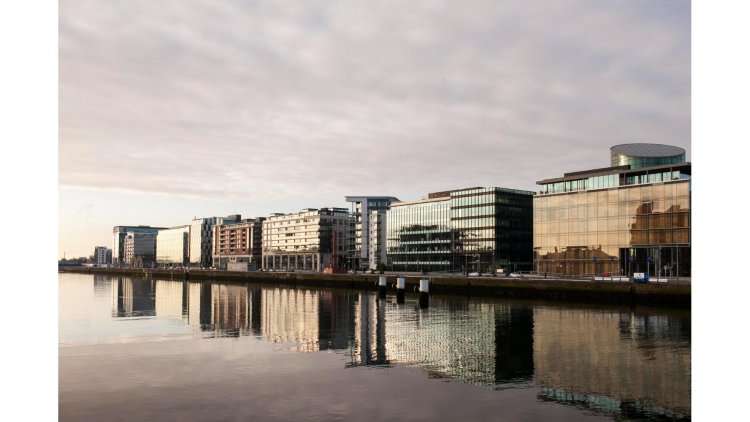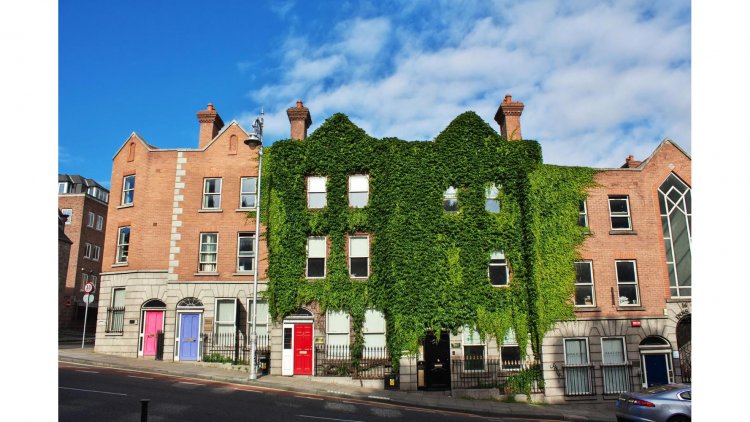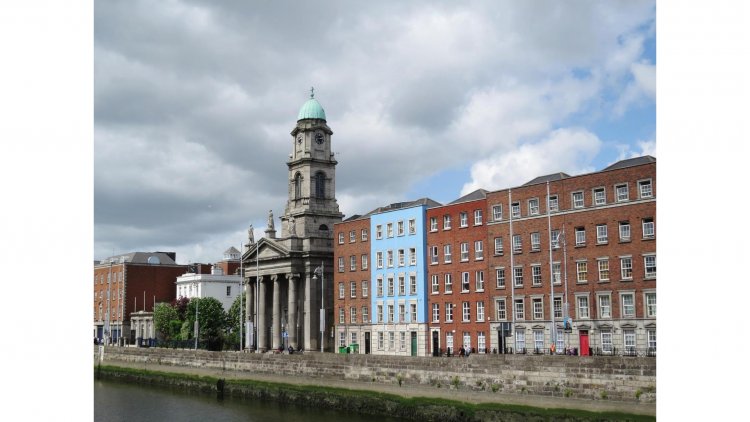The Dublin Mountains: Nature's Hidden Refuge
While Dublin’s urban landscape is captivating, the Dublin Mountains offer an escape into nature that’s just a stone's throw from the city. The Dublin Mountains, often overshadowed by the allure of the city center, provide a tranquil retreat for those seeking solace in the great outdoors. Here, you’ll find hidden trails, ancient woodlands, and panoramic views that stretch as far as the eye can see.
One of the most rewarding trails is the Ticknock Forest Walk. This trail takes you through dense forests and up to the summit of Three Rock Mountain, where you’re rewarded with breathtaking views of Dublin Bay, the Wicklow Mountains, and beyond. Along the way, you’ll encounter remnants of ancient burial sites and medieval ruins, each with its own story etched into the landscape.
For those interested in history, a visit to the Hellfire Club is a must. Perched atop Montpelier Hill, this eerie ruin was once a hunting lodge built in 1725. Legend has it that the building was used by a secret society known as the Hellfire Club, whose activities have been the subject of much speculation and myth. Today, the site offers not only a peek into Dublin’s darker past but also stunning views of the city below.
The Docklands: Dublin’s Modern Marvel
Dublin’s Docklands, once a gritty industrial area, has undergone a dramatic transformation in recent years. While the area is now known for its modern architecture and tech hubs, it also harbors hidden gems that tell the story of Dublin’s maritime heritage.
One of the best ways to explore the Docklands is by taking a walking tour along the River Liffey. As you stroll along the waterfront, you’ll discover a blend of old and new, from the historic Jeanie Johnston Tall Ship to the strikingly modern Samuel Beckett Bridge. But beyond the obvious landmarks, the Docklands are home to a network of hidden canals and quiet quays, where you can escape the hustle and bustle and enjoy a moment of reflection.
For art lovers, the Dublin Canvas Project has turned the city’s utility boxes into a vibrant outdoor gallery. Scattered throughout the Docklands, these painted boxes showcase the work of local artists and add a splash of color to the urban landscape. Each piece tells a different story, offering a unique perspective on Dublin’s creative spirit.
Kilmainham Gaol: Echoes of Ireland’s Past
While Kilmainham Gaol is one of Dublin’s more well-known attractions, few visitors take the time to delve into its deeper history. This former prison, which played a crucial role in the fight for Irish independence, is steeped in stories of rebellion, sacrifice, and hope.
A guided tour of Kilmainham Gaol takes you through the stark, cold corridors where some of Ireland’s most famous revolutionaries were imprisoned. But beyond the historical facts, the gaol is a place where you can feel the weight of history in every stone. The tour guides, many of whom are passionate historians, bring the stories of the past to life, making it a deeply moving experience.
For a truly immersive experience, visit the prison cells, where the leaders of the 1916 Easter Rising were held before their execution. The cells have been preserved as they were, with personal items and writings left behind by the prisoners. It’s a sobering reminder of the sacrifices made for Ireland’s freedom and a powerful insight into the country’s turbulent history.
The Blessington Basin: A Tranquil Urban Oasis
Hidden away in the heart of Dublin’s north side, the Blessington Basin is a little-known urban oasis that offers a peaceful retreat from the city’s hustle and bustle. This picturesque park, with its tranquil pond and lush greenery, is a favorite spot for locals but remains relatively undiscovered by tourists.
Originally a reservoir built in the 19th century, the Blessington Basin has been transformed into a public park that retains much of its Victorian charm. The park is home to a variety of wildlife, including swans, ducks, and other waterfowl, making it a perfect spot for birdwatchers and nature lovers.
The surrounding area, known as Phibsborough, is one of Dublin’s most historic neighborhoods. Take a stroll through the tree-lined streets, and you’ll discover a mix of old and new, from traditional Irish pubs to trendy cafes. The Phibsborough Library, housed in a beautiful red-brick building, is another hidden gem worth exploring.
Glasnevin Cemetery: A Walk Through History
Glasnevin Cemetery, located just outside the city center, is more than just a resting place for the dead; it’s a living history of Ireland. Established in 1832, the cemetery is the final resting place of many of Ireland’s most famous figures, including Daniel O’Connell, Michael Collins, and Éamon de Valera.
While the cemetery is well-known, its hidden corners hold stories that are often overlooked. The Glasnevin Cemetery Museum offers guided tours that delve into the history of the cemetery and the lives of those buried there. The O’Connell Tower, which stands at the heart of the cemetery, offers panoramic views of Dublin and is well worth the climb.
One of the most poignant areas of the cemetery is the Grave of the Unknown Child, a memorial to the thousands of children who died during the Great Famine. The cemetery also houses a dedicated section for those who died during the Easter Rising, making it a place of deep national significance.
Dublin’s Street Art: A Hidden Canvas
While Dublin is known for its traditional art galleries, the city’s streets are home to a vibrant and ever-changing collection of street art. From large-scale murals to small, hidden pieces, Dublin’s street art scene offers a unique way to explore the city’s culture and creativity.
One of the best places to start your street art journey is in the Smithfield area, where you’ll find a mix of commissioned murals and spontaneous graffiti. The walls of Richmond Street, in particular, are a canvas for local and international artists who use the space to express their views on everything from politics to pop culture.
But Dublin’s street art isn’t just confined to the city center. Venture out to Portobello or Rathmines, and you’ll discover hidden works of art tucked away in alleys and side streets. These pieces often reflect the local community and offer a glimpse into the city’s underground art scene.
For those interested in learning more, there are street art tours available that offer insights into the artists behind the work and the stories they’re telling. It’s a side of Dublin that’s constantly evolving, making each visit a new experience.
Dublin is a city that reveals itself slowly, with each hidden corner offering a new perspective on its rich history and vibrant culture. From the tranquil gardens and historic cemeteries to the bustling streets and vibrant art scene, Dublin’s hidden gems provide a deeper connection to the city and its people. Whether you’re seeking solace in nature, exploring the city’s past, or immersing yourself in its creative energy, Dublin’s lesser-known spots offer something truly special.
Discovering these hidden corners is more than just sightseeing; it’s about connecting with the soul of Dublin, where the stories of the past meet the pulse of the present. So, next time you find yourself in Ireland’s capital, take a detour from the usual tourist trail and explore the hidden gems that make Dublin one of the most intriguing cities in the world.








